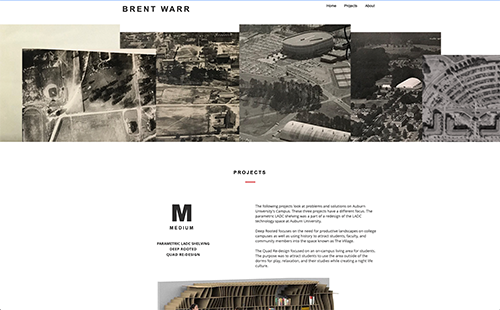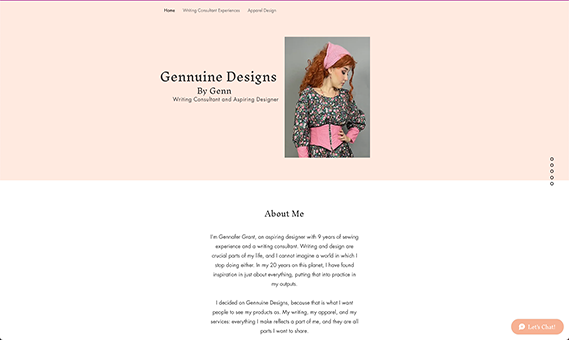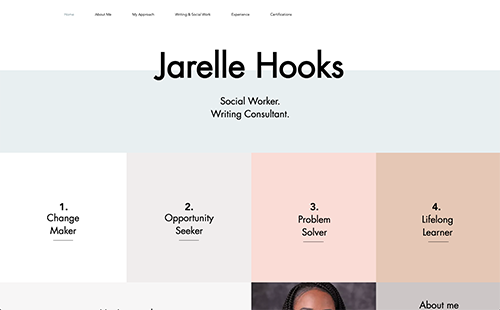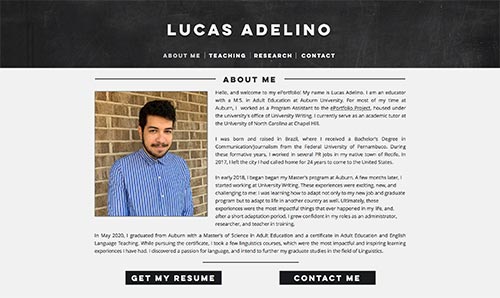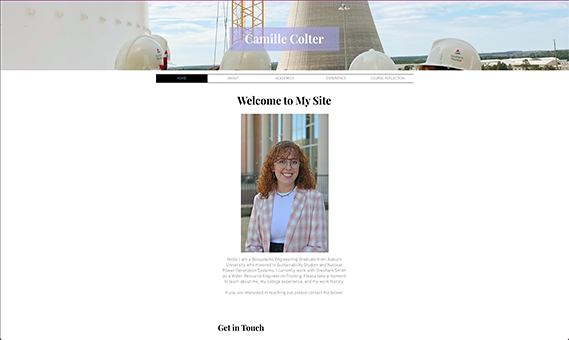Tagged Entries: Critical Thinking
Taking on a creative work can be daunting. Whether you are gearing up for NaNoWriMo or looking for year-round support, these resources will help you work through the writing process for endeavors such as novels, novellas, and short stories. Specifically, these documents are useful for brainstorming, drafting, and organizing ideas for premise, plot, point of view, characters, worldbuilding, and dialogue. You will also learn scene blocking techniques and tips for finishing and revising your first draft.
Materials designed by Autumn Frederick and Heesun Yoon
This worksheet introduces you to premise, provides a breakdown of premise components, and helps you draft your own premise
This worksheet reviews two types of story structure: the Three Act Structure and Freytag’s Pyramid. Space is provided to help you map your story out in both structures to decide which best fits your writing style
This worksheet discusses five points of view found in creative writing, notes tips for helping writers select a point of view, provides resources for writing and reading for diversity, lists questions to consider for character creation, and provides fillable character profiles
This worksheet provides planning resources, an overview and list of decisions, and activity for delving into worldbuilding
This handout breaks down tips for improving your descriptive writing and provides examples and explanations for each suggestion
This brief handout provides an explanation of what dialogue is and how it is formatted and provides space for practice
This brief worksheet defines scene blocking and provides an activity for practice
This brief handout lists good habits for finishing your project and outlines tips and resources to aid you in revising your first draft
Academic writing is a unique type of writing and can vary across disciplines. Use these materials to better understand the elements of academic writing, such as voice, disciplinary writing, and college-level writing. Reading academic sources is an important part of learning how to write in your discipline. For tips on how to engage with reading these sources, see our section on Reading Difficult Materials
Materials designed by Colby Axelberd, Christopher Basgier, Amy Cicchino, Clare Hancock, Megan Haskins, and James Truman
This worksheet is designed to help incoming first-year college students learn a bit about writing at the college level. There are also scenarios where students can consider what they would do in difficult writing situations
The handout breaks down some implicit expectations related to academic voice, such as when and how to use first-person writing, jargon, style, and sentence variation
This worksheet invites you to revise a piece of writing by paying attention to its voice within a sample paragraph
This brief handout provides some examples of academic voice from various disciplines
This worksheet provides excerpts from disciplinary writing and asks participants to guess the disciplinary context for the writing. By doing this, we hope you will begin to see how different disciplines structure and style their writing
This worksheet helps you apply reading like a writer to your work by inviting you to examine written artifacts from a writerly perspective by paying attention to features like structure, key terms, signposting, and verb use
This worksheet is meant to help graduate students approach writing their first manuscript by making explicit options for manuscript section organization and looking at examples
This handout invites readers to compare an excerpt from a dissertation to an excerpt of the same material, rewritten for nonspecialist or "general" audiences
This handout invites extension professionals to reflect on the kinds of academic and non-academic genres the produce in their positions.
This worksheet invites writers to plan a piece of writing for a general audience by leading them through the elements of the rhetorical situation
This worksheet guides you through developing an argument and countering opposing arguments with a focus on claims, reasoning, and impact
Artificial Intelligence (AI) applications like ChatGPT offer new opportunities and challenges for teachers and for students. The documents in this section offer guidance on how to respond to AI in ways that center thinking and communication.
Materials designed by Christopher Basgier
This document represents University Writing’s most up-to-date guidelines for faculty response to AI. It is organized according to four modes of response: prohibition, permission, pedagogy, and engagement
This document represents University Writing's most up-to-date information and guidance for students on AI. It defines artificial intelligence, describes large language models like ChatGPT, and guides students in deciding when and how to use AI in their courses
This handout suggests ways in which writers can practice critical thinking while using generative artificial intelligence
This worksheet invites users to plan the elements of a successful prompt for generative artificial intelligence
Carefully and critically reading is an important part of being a successful student and professional. Reading can help you understand important information and learn more about how a particular kind of writing is created.
Materials designed by Christopher Basgier, Katharine Brown, Margaret J. Marshall, and James Truman
This handout guides you through “reading like a writer,” an analysis strategy developed to help you think about the choices the writer made
This worksheet helps you apply reading like a writer to your work by inviting you to examine written artifacts from a writerly perspective by paying attention to features like structure, key terms, signposting, and verb use
This handout provides you with tools you can use to make sense of difficult reading material by engaging in active reading
This worksheet will help you make important observations about a text before you begin reading it by previewing
This handout gives a broad overview of academic scholarship and strategies that you can use to actively read the major parts of an academic research publication
This worksheet introduces you to a says/does outline, which can help you understand why and how a writer communicates their ideas
Reflective writing helps you critically think about your learning, respond to new knowledge, connect your learning experiences, and consider how new knowledge aligns to your professional and developmental goals. Use the resources below to learn more about reflective writing, including how to design reflective writing prompts.
Materials designed by Amber Simpson, Animal Sciences Academy Team, Christopher Basgier, ePortfolio Project, Heather Stuart, Lindsay Doukopolous, Margaret Marshall, and Parker Wade
This handout provides a brief introduction to reflective writing along with sample questions that can support reflective thinking
This handout introduces you to the six Rs of reflection: reporting, responding, relating, reasoning, reconstructing, and repackaging. Bain, J., Ballantyne, R., Mills, C. & Lester, N. (2002) labeled these levels with the mnemonic “5 Rs of reflection.” We have added a sixth level to this framework to account for the way reflection moves into other genres, such as an ePortfolio or personal narrative
This handout will take you through a heuristic process aimed at developing an effective reflective writing assignment for students keeping in mind the expected learning outcomes
-
A Heuristic for Developing a Reflective Writing Assignment Word Document
-
A Heuristic for Developing a Reflective Writing Assignment PDF
Reflection can take many different forms, and any number of strategies can help you support students’ reflective practices. This handout lists various prompts and questions you can adapt to your specific course context and objectives
This handout is meant to inform you on the benefits of using reflective writing in lab contexts
-
Assigning Reflective Writing Prompts in Lab Settings Handout Word Document
-
Assigning Reflective Writing Prompts in Lab Settings Handout PDF
This worksheet guides you in using expressive writing for self-discovery. You will learn about different types of expressive writing, such as answering prompts or making gratitude lists, and can complete several reflective prompts.
This handout gives three example reflective writing assignments from different disciplines, each fostering a different goal related to reflective practice
This worksheet will help you consider questions that are important as you develop a reflective writing prompt for your course
Once you’ve developed your reflective writing prompt, this peer reviewguide can help you get feedback.
-
Peer Feedback on Reflective Writing Prompts (for Faculty) Word Document
-
Peer Feedback on Reflective Writing Prompts (for Faculty) PDF
This worksheet provides examples of student reflections in need of feedback and guidance which you can use to practice providing feedback that helps students improve their reflective writing
This rubric was created as part of our ePortfolio Project. However, you can use or adapt it to assess reflective writing in ePortfolios
This section contains resources for getting started on your writing and revising your writing over time for effective organization, flow, transitions, and editing and proofreading.
Materials designed by Christopher Basgier, Jordan Beckum, Katharine Brown, Amy Cicchino, and James Truman
This worksheet helps you apply reading like a writer to your work by inviting you to examine written artifacts from a writerly perspective by paying attention to features like structure, key terms, signposting, and verb use
This handout offers strategies and techniques for generating and organizing writing ideas
This handout breaks down the writing concept of “flow” at the whole text, paragraph, and sentence level
- Organization and Flow Handout and Worksheet Word Document
- Organization and Flow Handout and Worksheet PDF
This handout provides an overview of strategies that different writers have found helpful as they make global changes to their writing
This handout provides an overview of useful strategies for making global revisions to a manuscript and an action plan
This handout invites readers to compare an excerpt from a dissertation to an excerpt of the same material, rewritten for nonspecialist or "general" audiences
This worksheet invites writers to plan a piece of writing for a general audience by leading them through the elements of the rhetorical situation.
This handout provides an easy reference list of common transitional words and phrases
This handout explains the difference between proofing and revision processes
This worksheet will help you apply the paramedic method of editing to improve sentence-level clarity
This worksheet lets you practice applying editing and proofreading strategies to sample text through two activities
This handout suggests ways in which writers can practice critical thinking while using generative artificial intelligence
This worksheet invites users to plan the elements of a successful prompt for generative artificial intelligence
Writing-to-learn activities are low-stakes writing prompts that help students engage with content knowledge, think critically, and practice applying their learning. Use the resources below to learn more about writing-to-learn and how it might play a role in your course.
Materials designed by Christopher Basgier, Alyssa Pratt, and Djibo Zanzot
This worksheet is designed to help you understand some of the features of an effective writing-to-learn (WTL) prompt. Remember that these features are not necessarily a checklist: some prompts will include and exclude different features depending on what is appropriate for your course and field
-
Features of Effective Writing-to-Learn Prompts Worksheet Word Document
-
Features of Effective Writing-to-Learn Prompts Worksheet PDF
This handout includes a range of writing assignments and activities you can ask students to complete in your course in order to promote their learning. Many of these assignments can have high stakes or low stakes versions
This worksheet will help you identify and define a difficult concept, and then map different levels of understanding for that concept. You can use these definitions as a basis for crafting your writing-to-learn assignments
Artifacts show evidence of your experiences, knowledge, and skills and can be anything: videos, photos, internship experiences, study abroad experiences, research posters, and course projects. You’ll want to contextualize your artifacts with reflective writing, which can connect your specific artifacts to your larger professional goals and personal brand.
Materials designed by Amber Simpson, Heather Stuart, and Parker Wade.
This handout offers examples of artifacts that you might potentially include in your ePortfolio. Remember, artifacts can be any kind of media
This worksheet will help you brainstorm artifacts and connect your artifacts to the skills that you are trying to showcase
Reflective writing allows you to articulate why an experience is important, what you learned during the process, and how you plan to apply your skills to future projects or endeavors. This handout gives you questions that you can use to begin drafting reflective writing for artifacts in your ePortfolio
This worksheet will guide you in drafting reflective writing for an artifacts in your ePortfolio
You can see how students at Auburn share and contextualize their artifacts by visiting our ePortfolio gallery
Below are links to ePortfolios from Auburn University students and alumni. Here you will find a variety of ePortfolios that include thoughtful reflections and relevant artifacts that showcase student learning to audiences outside the University.





